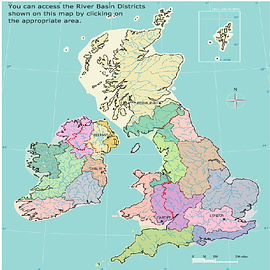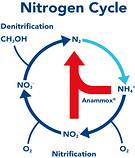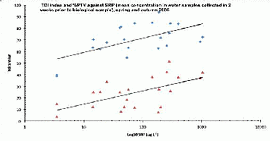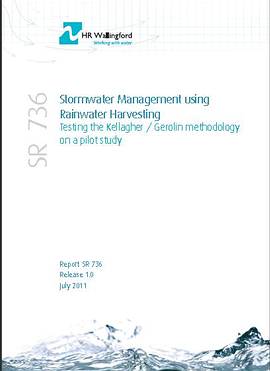Wastewater Forum Archive
WASTEWATER RESEARCH AND INDUSTRY SUPPORT FORUM
Meeting 3rd November 2011
This was the Forum’s 45th meeting. It was held in the Boardroom of the Chartered Institution of Water & Environmental Management (CIWEM) in London. Members of CIWEM’s Wastewater Management Panel joined the Forum for the technical presentations and discussion.
Members of the Forum discussed the Office of Fair Trading’s recommendations from its market study on the treatment of organic waste in which the OFT observed that the water industry has evolved a culture of risk avoidance [as distinct from risk management] as a consequence of the regulatory framework. This has limited innovation because, inevitably, some innovations do now succeed; failure has been criticised by Ofwat as wasting customers’ money but success has now been celebrated. Ofwat has also recognised this cultural symptom and wants to establish a climate where a more entrepreneurial culture evolves.
Ofwat’s Future Price Limits project aims to produce a better means of regulating the water industry. Ofwat also aims to shift the focus from Capex to Totex. This was rather similar to Severn Trent’s “Changing Course, Delivering a sustainable future for the water industry in England and Wales” report published in April 2010 by Severn Trent Water. Members were told that Severn Trent is thinking about being more adventurous on co-digestion. We had previously heard that Severn Trent has set itself a very impressive (industry leading) self-generated renewable-energy target. Ofwat will probably move away from specifying individual schemes to much higher level outputs such as “protecting the environment as measured by …”. The days of collecting and analysing detailed information via the “June Return” are probably over as well. Hopefully the companies will use their own operational data to improve their efficiencies, for example kWh/m3.m head can reveal inefficient, worn or inappropriate pumps; companies have the data but in the past have not always looked at ratios significant to their business.

The Water Framework Directive requires that all inland and coastal waters within defined river basin districts (map left) must reach at least good status by 2015 and defines how this should be achieved through the establishment of environmental objectives and ecological targets for surface waters taking due account of environmental, economic and social considerations.
By 31st December 2013 the first river basin management plans (RBMP) should have been reviewed and based on that an interim view of issues that need to be addressed in the second river basin management plans should have been published.
By 31st December 2015 the environmental objectives specified in the first river basin management plans should have been achieved and the second RBMPs with revised programme of measures (to be achieved in 2021) should have been finalised and published. A problem arises that the next business cycle for the water companies (AMP6) will start in 2014 and the business plans (PR14) will have been evaluated and the price determinations made before the second RBMPs are known and yet they might have large impacts on costs and water bills, i.e. the goal posts could be shifted 1 year into AMP6.
NanoFATE (an FP7 project coordinated by CEH) has just completed a significant phase of its work. The concentrations of anthropogenic nano materials in soils and rivers has been predicted from population x concentration. The concentration in rivers is expected to be low. Colloidal silver was monitored at nine WwTW; removal from the water stream was found to be 97-98%. The fate of nano-silver in water is to transform either into ionic silver or to clump together into larger particles.

Severn Trent is installing the first ANAMMOX® plant in the UK to treat dewatering liquor at Minworth WwTW. It is expected to use only 40% of the energy needed for conventional activated sludge. A feature of the implementation is that is uses granular biomass with naturally occurring anammox bacteria coated with nitrifying bacteria. Another energy saving initiative will be installing HYBACS RBCs at Ashmore WwTW, this will be the first implementation in Europe of this Korean technology. It claims to use only 60% of the energy of conventional activated sludge treatment.
 |
Severn Trent has commissioned research (in collaboration with the Environment Agency) into water quality criteria and phosphate. It was undertaken by Sean Comber of Atkins. Having spent £ millions on phosphate removal, almost 2,000 water bodies in UK currently fail to achieve good status based on the Environmental Quality Standards (EQS) derived for diatoms or phosphate. There are many incidences where a water body passes the phosphorus EQS but does not meet good status for diatoms and vice versa. Although trend lines have been plotted through the data shown left, it is clear that the same Trophic Diatom Index was recorded in waters differing in soluble reactive phosphate by 3 orders of magnitude of concentration (mean concentration in water samples collected 2 weeks prior to biological sample), spring and autumn 2005 in English lowland streams). There can be little doubt that SRP (soluble reactive phosphorus) is not a good EQS if you are seeking to control diatoms. Other Member States have not applied the same level of stringency. |
| Relationships between Trophic Diatom Index (above) and associated Pollution Tolerant Values (below) against Soluble Reactive Phosphate |
Because of concerns about reactive iron (Fe) and aluminium (Al) in rivers etc. the Environment Agency applies discharge limits on Fe and Al from wastewater treatment works which is increasing the difficulty of phosphate removal. Reactive Fe and Al would convert to oxides and oxy-hydroxides, which have low toxicity, however they could blind spawning gravels but the quantities required would be massive, many orders of magnitude greater than the limits for reactive Fe and Al. Other countries have not considered Fe and Al from chemical P-removal to be a risk.
CIRIA is working on its guide to retrofitting SuDS. The main interest of the transport infrastructure sector has been to get water off road surfaces as quickly as possible. Water sensitive urban design is gaining interest amongst WaSCs. Updating the SuDS standards and SuDS website are delayed because whilst Local Authorities will have to ‘own’ SuDS, government has not decided how this will be funded. Attention has focussed on new development with little consideration of retrofitting. Defra and CLG are in non-concluded discussions.
WRc has been working with Arup to carry out a water interests survey for the Isles of Scilly for Defra; the resident population is 2,000 but tourists swell this to 20,000. WRc’s latest newsletter was discussed.
FWR has recently published the following ROCKs
- Sewage Sludge Disposal: Operational and Environmental Issues
- Endocrine Disrupters in the Environment
- Urban Drainage and the Water Environment: a Sustainable Future
- Desalination for Water Supply
- Surface Water Management and Urban Green Infrastructure - A review of potential benefits and UK and international practices
- Floods: alleviation, protection, response and risk management
The target date for launching the revised UPM (Urban Pollution Management) manual, which will be web-based, is spring 2012. Severn Trent hosted a workshop attended by 30 participants and the level of cooperation to date has been very good.
Technical Presentations with members of CIWEM’s Wastewater Management Panel
Rainwater harvesting for stormwater management - Proof that it works
Richard Kellagher, HR Wallingford - Presentation
 SR 736, which was published in July 2011 (91 pp), found that the commonly held perception that RWH is of limited value in stormwater management is wrong because the question has not been analysed objectively. It found that the critical factor is that demand (D) for the harvested water should exceed the yield (Y) of rainwater. Provided that Y/D < 0.95, RWH contributes to stormwater management and coincidentally it contributes to water resources. In order to achieve sufficient D, the harvested water must be used for washing machines as well as for toilet flushing. Literature research showed that modern toilets use 21 litres/person.day and washing machines use 19 litres/person.day. The modelling was tested at a small housing development in Banbury, Oxfordshire, UK. In the UK mean monthly rainfall does not change very much through the year but the largest urban flooding events tend to be in the summer. For the current UK climate, annual rainfall proved to be adequate for the yield term with little benefit from using seasonal rainfall, however this could change if summers become drier and winters wetter (as predicted).
SR 736, which was published in July 2011 (91 pp), found that the commonly held perception that RWH is of limited value in stormwater management is wrong because the question has not been analysed objectively. It found that the critical factor is that demand (D) for the harvested water should exceed the yield (Y) of rainwater. Provided that Y/D < 0.95, RWH contributes to stormwater management and coincidentally it contributes to water resources. In order to achieve sufficient D, the harvested water must be used for washing machines as well as for toilet flushing. Literature research showed that modern toilets use 21 litres/person.day and washing machines use 19 litres/person.day. The modelling was tested at a small housing development in Banbury, Oxfordshire, UK. In the UK mean monthly rainfall does not change very much through the year but the largest urban flooding events tend to be in the summer. For the current UK climate, annual rainfall proved to be adequate for the yield term with little benefit from using seasonal rainfall, however this could change if summers become drier and winters wetter (as predicted).
For stormwater management (to cope with a 60mm rainfall event) the volume of storage needed is 1 to 3 m3/person; this is 2 to 6 times larger than is usual for water supply considerations. Consequently the cost and the embedded carbon are large. Storage shared between several properties (maybe 10) could even out occupancy (demand) differences. The research found fault with the Environment Agency’s conclusion that the operational carbon cost of RWH exceeds that of potable water [and the EA seems not to have considered the C-cost-saving of not conveying the runoff and treating it]. BS8515 deals with the colour coding of pipes for potable and non-potable water. In water-scarce countries (e.g. Australia) where dual-reticulation (potable and non-potable water) is well established, colour coding of pipes is well understood. This research demonstrated that RWH can manage stormwater effectively if storage and usage of the water are sized appropriately.
Engineering Nature’s Way [for rainwater]
Alex Stephenson, Hydro International - Presentation
This was an opportunity to learn about and discuss Engineering Nature’s Way, which is a web resource for people working with Sustainable Drainage Systems (SUDS) and flood risk management in the UK www.engineeringnaturesway.co.uk. The site shares news, opinion, information and best practice for people working in local government, central government, developers, consulting engineers and contractors.
Well designed surface water management measures provide a multiplicity of benefits to urban environments. SuDS and Water Sensitive Urban Design (WSUD) are not new, they have been used very successfully in other countries but the UK has been slow to implement them, especially as retrofit, which given the slow turnover of the UK’s urban areas is essential. SuDS and WSUD deliver flood protection, improve water quality and can help contribute to water efficiency. They can also improve quality of life by improving public spaces and providing better ecological outcomes. They can be applied to every development and a range of techniques (natural, manufactured or a combination of the two) is available to recreate or improve on natural drainage paths.
Members applauded Hydro International for launching and hosting this initiative.
EoW for compost and digestate Workshop at JRC Seville 25th October 2011
Tim Evans, TIM EVANS ENVIRONMENT [represented EWA] - Presentation
This was the second meeting to consider criteria by which composted or anaerobically digested organic materials could cease to be considered as wastes and therefore outside the revised Waste Framework Directive.
Substantial amounts of sewage sludge are composted (generally with greenwaste) in Austria, Finland, France, Italy and Spain (and probably more MS) because, effectively, composting confers EoW status and the rules are then less onerous than the rules for recycling sewage sludge. The UK has EoW criteria for compost and for digestate (the “quality protocols”) but both forbid the inclusion of sewage sludge as an ingredient. Representatives of the EC confirmed that when there are EU EoW criteria they will supersede MS criteria, i.e. current MS criteria will cease to be valid. If EoW for composted sewage sludge was withdrawn (which is possible from this workshop) it would have serious consequences for sewage sludge in several MS and also for greenwaste.
Delegates were divided between those who thought it should only be necessary to define criteria for the outputs plus HACCP and QA for the process and those who thought it was necessary to prescribe everything. This second group thought input should be restricted to separately collected materials, that process conditions should be prescribed, that there should be a list of forbidden inputs and that there should be output criteria; some were emotional in their opposition to sewage sludge and to post collection sorting.
The opposition to sewage sludge took no account of the need to conserve the planet’s phosphate. The EU imports 9% of world phosphate extraction. Approximately 34% of the imported phosphate ends up in urban wastewater; currently only 52% of phosphate is removed from wastewater and only 20% of the phosphate in wastewater is recycled; 80% is squandered. Sweden already has a phosphate-recycling target and one is proposed for Germany, maybe in 2012. In 2012 the EC will launch a White Paper on phosphate. It would be somewhat bizarre if the EoW initiative conflicted with stewardship of phosphate.
The JRC Ispra presented the initial results from analysing samples of composted and digested materials that had been submitted by producers. Whilst concentration is not necessarily the same as risk, each of the samples had a concentration of at least one of the analytes that exceeded the concentration in sewage sludge.
Table 1 Concentrations measured by JRC Ispra
| |
Hg |
Cr |
Cu |
Ni |
Pb |
Zn |
PCB |
Dioxin |
| |
mg / kg DS |
ng/kgDS |
pg/kgDS |
| Greenwaste compost |
0.06 |
21 |
45 |
11 |
40 |
60 |
95 |
1700 |
| Sludge compost |
0.15 |
17 |
60 |
13 |
41 |
65 |
32 |
800 |
| Biobin + GW compost |
0.05 |
18 |
70 |
14 |
43 |
195 |
26 |
800 |
| Biobin digestate |
0.08 |
22 |
270 |
12 |
29 |
190 |
58 |
3400 |
| MBT compost |
0.38 |
82 |
190 |
31 |
108 |
440 |
93 |
3100 |
| |
5PBDE |
8PBDE |
10PBDE |
musk |
musk |
PFOS |
PFOA |
PFNA |
| |
ng / kgDS |
| Greenwaste compost |
48 |
0 |
10 |
0 |
0 |
2 |
1 |
0.7 |
| Sludge compost |
11 |
2 |
120 |
380 |
2000 |
11 |
3 |
1.6 |
| Biobin + GW compost |
8 |
0 |
20 |
0 |
0 |
1 |
1 |
0.7 |
| Biobin digestate |
13 |
1 |
50 |
0 |
150 |
2 |
1 |
0.7 |
| MBT compost |
68 |
56 |
1000 |
220 |
1000 |
9 |
6 |
1.1 |
Data presented at the meeting also highlighted the problem of inconsistent results from accredited labs around Europe (Table 2). Before getting too detail discussion about concentrations there is a need for a European proficiency scheme for composts and digestates, with blind samples, so as to ensure that everybody is talking and thinking about the same thing. If one Member State consistently reports lower concentrations, it is not surprising that it demands lower limit values.
The arguments against arbitrarily excluding sludge [or any other material] from the possibility of EoW status are that it could distort the market for using biosolids on farmland, prevent the realisation of economy of scale [or critical-mass] for co-treatment and impair phosphate stewardship.
Table 2 Concentrations of metals in a sample of compost reported by accredited laboratories in Europe

The next meeting of the Forum will be 1st March 2012.




